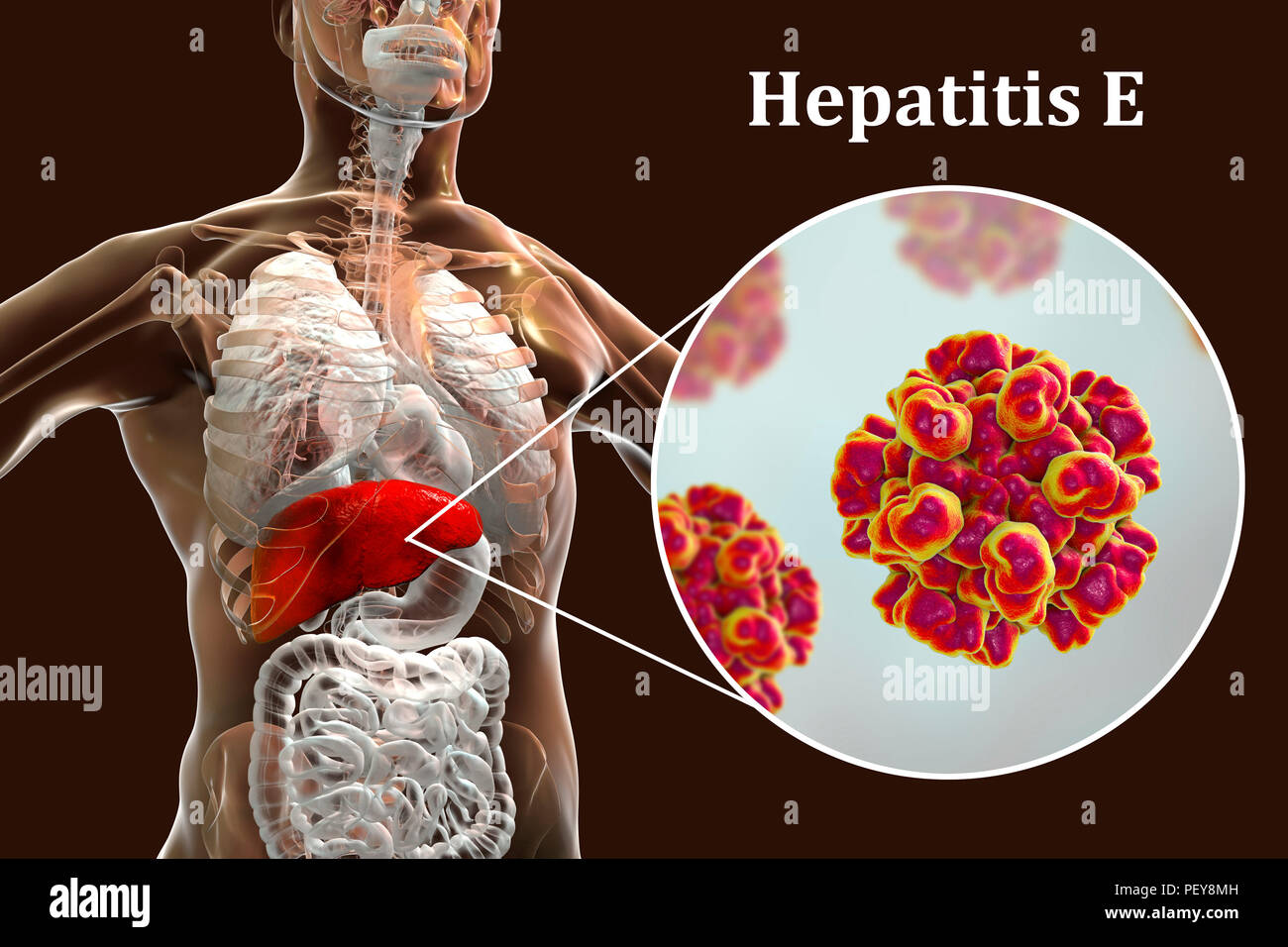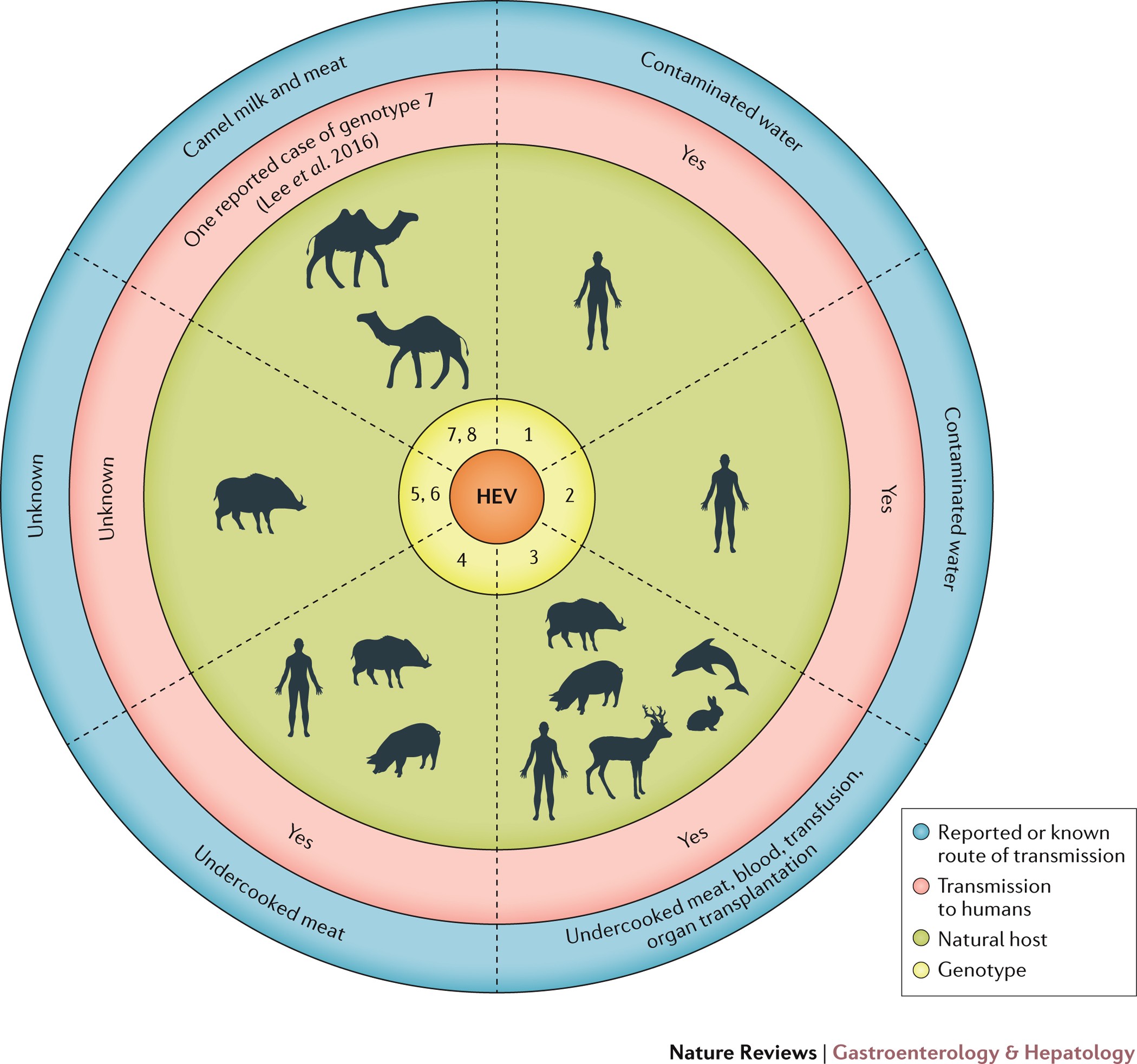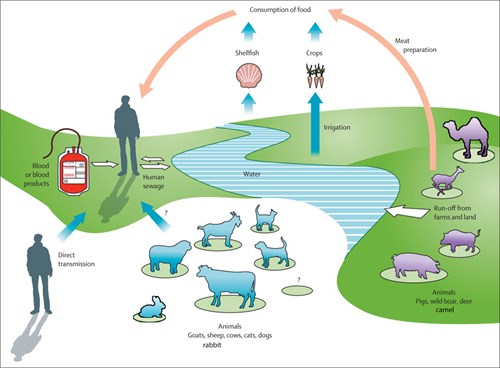Hepatitis E
Hepatitis E is a viral infection that causes liver inflammation and damage. Hepatitis E is an illness of the liver caused by the hepatitis E virus HEV a virus which can infect animals and humans.
However recent reports revealed that acute hepatitis E was not a rare disease in developed countries.

Hepatitis e. Inflammation is swelling that occurs when tissues of the body become injured or infected. A pooled faecal extract from affected soldiers was ingested by a member of the research team. Usually it doesnt lead to long-term illness or.
HEV is found in the stool of an infected person. Hepatitis E Hepatitis E infection is a disease of the liver caused by hepatitis E virus HEV. Hepatitis E is inflammation of the liver caused by infection with the hepatitis E virus HEV.
Hepatitis E is usually spread when people ingest something that has been contaminated by the stool of an infected person. Acute infections cause a self-limiting hepatitis but can become chronic in immuno-compromised patients with the risk of the development of severe liver cirrhosis. Hepatitis E is usually spread when people ingest something that has been contaminated by the stool of an infected person.
Facts about hepatitis E. In Europe most of the infections are locally-acquired and asymptomatic. The infection may vary in severity from inapparent infection to fulminant liver failure and death.
Hepatitis E is inflammation of the liver caused by the hepatitis E virus. Hepatitis E is inflammation of the liver caused by the hepatitis E virus. 23 Two main geographically distinct strains Asian and Mexican are recognized.
Viruses invade normal cells in your body. It is a type of viral hepatitis. Although rare in developed countries hepatitis E is widespread in the developing world.
It can cause your liver to swell up. In the vast majority of people HEV infection results in a self-limited acute illness. Hepatitis E should be considered a neglected tropical disease Niger Preventing the spread of hepatitis E 1 Nov 2017 Nigeria People are dying of hepatitis E because they dont have soap or clean.
This virus can infect both animals and humans. 24 Hepatitis E is endemic in the Indian subcontinent where it causes up to 70. Genotypes 1 and 2 exclusively infect humans whereas genotypes 3 and 4 also infect pigs and several other mammalian species.
Hepatitis E virus HEV was discovered during the Soviet occupation of Afghanistan in the 1980s after an outbreak of unexplained hepatitis at a military camp. Hepatitis E is a liver infection caused by the hepatitis E virus HEV. It can be spread from animals to humans through the consumption of undercooked or raw pig and game meat processed pork and shellfish.
Hepatitis E virus HEV was first discovered in developing countries and acute hepatitis E became popular acute hepatitis in developing countries. A virus is a microscopic particle that needs to get inside living cells in order to reproduce spread. The earliest known epidemic of hepatitis E happened in 1955 in New Delhi but the virus was not discovered until 1983 by Russian scientists investigating.
However disease symptoms can vary from no clear symptoms to liver failure. The hepatitis E virus has different types that spread in different ways. Hepatitis E is a liver disease caused by the hepatitis E virus HEV.
Hepatitis E is an acute or chronic infection with the hepatitis E virus HEV. Among pregnant women theres a risk of the virus causing severe illness which can in rare cases be. He became sick and the new virus named HEV.
Hepatitis E is a small nonenveloped single-stranded RNA virus structurally similar to caliciviruses but more closely resembling the rubella virus with regard to its genomic structure. What is hepatitis E. Hepatitis E causes typical symptoms of viral hepatitis including loss of appetite a.
Facts about Hepatitis E How common is Hepatitis E. Hepatitis E is a virus that infects your liver. What causes Hepatitis E.
Most people in the UK will not have heard of hepatitis E. Hepatitis E the fifth known form of human viral hepatitis is probably the most common cause of acute hepatitis and jaundice in the world. Inflammation can damage organs.
Hepatitis E refers to liver disease caused by the hepatitis E virus HEV a small nonenveloped virus with a single-stranded RNA genome. It is spread when someone unknowingly. Hepatitis E sometimes called hep E or HEV is a liver disease caused by the hepatitis E virus.
It is a single-strand positive-sense RNA virus. HEV infection usually produces a mild disease. The virus has four genotypes but only one serotype.
Hepatitis E HEV is a hepatotropic virus and the causative agent of hepatitis E an acute viral hepatitis in humans. Hepatitis E causes typical symptoms of viral hepatitis including loss of appetite a general feeling of illness and jaundice. Hepatitis E has mainly a fecal-oral transmission that is similar to hepatitis A but the viruses are unrelated.
Most people with hepatitis E get better within a few months.

Tackling Transmission Routes Of Hepatitis E Hev Wur

Hepatitis E Infection Computer Illustration Showing The Liver And A Close Up View Of Hepatitis E Viruses Stock Photo Alamy

Hepatitis E All About It English Subtitles Tvagro Por Juan Gonzalo Angel Youtube

Hepatitis E Virus Infection Beyond The Liver Journal Of Hepatology
Symptomen Van Hepatitis E World Hepatitis Day Infographics Vector Illustratie Op Geisoleerde Achtergrond Stockvectorkunst En Meer Beelden Van Bescherming Istock

Hepatitis E Virus Infection Beyond The Liver Journal Of Hepatology

Hepatitis E Infection Computer Illustration Showing The Liver And A Close Up View Of Hepatitis E Viruses Stock Photo Alamy

Hepatitis E Raw Pork Is Main Cause Of Infection In Eu

First Robust Cell Culture Model For Hepatitis E Virus Technology Networks

Hepatitis E Causes Symptoms And Treatment

Hepatitis E Symptoms Transmission And Prevention

Hepatitis E Virus Persists In The Ejaculate Of Chronically Infected Men Journal Of Hepatology

Schemata Of The Pathogenic Pathways Of Hepatitis E In Pregnancy Download Scientific Diagram

On Topic In Hoeverre Is Hepatitis E Een Opkomend Voedselveiligheidsrisico Te Noemen Vmt

Hepatitis E Virus Advances And Challenges Nature Reviews Gastroenterology Hepatology

Hepatitis E Latest Developments In Knowledge Future Microbiology



